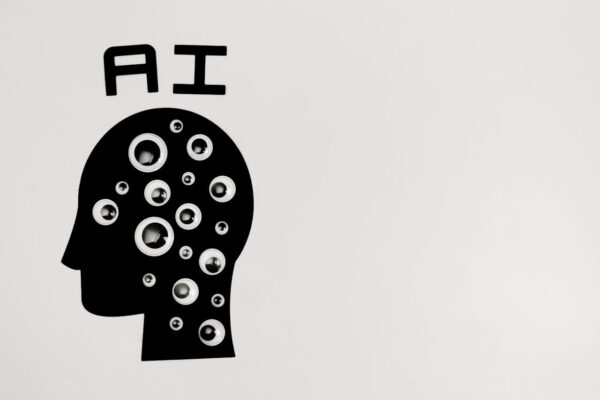You’ll probably come across a completely new terminology and set of concepts as you dig into the world of digital marketing, SEO, and paid search advertising. Landing pages will likely spark your curiosity about how it will help you in your digital marketing strategy for your website. Although creating a landing page may seem easy, it can be pretty straightforward, but we want to emphasise how crucial it is for lead conversion.
So, in this blog, we will discuss what a landing page is and why it’s so important for your business.
Let’s get started!
What is a Landing Page?
When someone clicks through from an email, advertisement, or other digital site, they “land” on a standalone web page known as a landing page. In order to maximise conversions, you want customers to take some sort of action, like sign up for your list or buy something. Your landing page will convert users successfully if they do the precisely targeted action.
In most cases, landing pages only encourage visitors to perform one action, such as completing the page’s custom signup form. Why? It’s due to the “paradox of choice,” which, to put it simply, states that the more options you give people, the more difficult it is for them to decide and take action.
Consider that you are giving away an ebook. However, you also offer visitors to your landing page to read your blog, make a purchase, and browse your social media pages. The likelihood that your users will download your new ebook decreases with each request because you have diverted their attention from your main goal.
On the other hand, offering users excessive options can overwhelm them, prompting them to hesitate and do nothing. This is why it’s crucial to concentrate on only one call to action (CTA) instead of three or four.
This is why a landing page needs to be tested for optimal conversion optimisation and a clear visual hierarchy and value proposition.
What is the Difference Between a Homepage and a Landing Page?
There are a few characteristics that differentiate home pages from landing pages. Homepages have:
- More Links – There are typically at least ten links on a homepage. There are frequent links in the footer, a navigation menu at the top, and the page’s body. However, on a well-optimised landing page, you’ll typically find fewer links and perhaps just one—the link that enables your users to convert.
- Broader CTAs – Your homepage gives visitors an overview of your company and acts as a central point from which they may explore various areas of your website. Your homepage has a lot of responsibilities. Thus, its content is frequently wide and has less targeted CTAs (e.g. “learn more”). Landing pages have a single objective. Hence, they feature customised CTAs (e.g. “download our free ebook”).
- Different Audience and Purpose – Many visitors to your homepage likely don’t know what they want yet. However, visitors who land on your landing pages have already expressed interest in what you have to offer. They are more prepared to convert now that they have gone further along your customer journey.
Not all landing pages are created equal. They can be divided into two main categories, which we’ll discuss next.
2 Types of Landing Pages
In terms of design, landing pages often have one of two purposes: generating leads or pointing visitors to the next action.
Lead Generation Landing Pages
These landing pages are often called “lead gen” and “lead capture” pages because they concentrate on gathering lead information. In other words, it gathers data about your clients.
A form that acts as the CTA is the defining characteristic of a lead capture page. In exchange for a product or service, it requests user information such as names, email addresses, and phone numbers. More information, such as their ages or jobs, might be requested. In this manner, you can get in touch with leads and strengthen their interest in your company.
There is still another use for this information. You can learn about your contacts from the data you gather. Your marketing efforts can, therefore, be directed at those who fulfil those criteria and are more likely to convert. In particular, if you execute sponsored advertising efforts, this can boost your return on investment (ROI).
In this way, the information that lead generation pages gather helps to enhance and maximise the effectiveness of your marketing plan. You can do this to customise your adverts to your target market and save money by avoiding advertising to non-converting audiences.
Landing pages for lead generation are a great resource for your company because they reveal information about your potential clients’ characteristics and communication methods. Consider including one on your website if lead nurturing is your top goal or if you need to know your audience better.
Click-Through Landing Pages
CTA buttons are the main focus of click-through landing sites, as opposed to lead generation pages, which feature forms. Your users are directed to a page where they can perform the desired action by clicking the button.
The user may be redirected to a scheduling page by clicking a button that says “schedule a demo,” for instance, or to a checkout page by clicking a button that says “buy X now.”
In addition to the CTA button, click-through landing pages typically incorporate compelling content like product specifications or user testimonials to entice further and engage potential customers.
What Isn’t a Landing Page?
It’s crucial to understand what isn’t a landing page in order to grasp the concept of a landing page completely. Most marketers do not regard your website’s homepage and individual web pages as landing pages. Why? Due to the clearly stated aim of these pages.
Think about the home page. It isn’t conventionally created with a certain CTA in mind. Instead, a homepage’s purpose is to acquaint visitors with the website and brand. A homepage also displays the available material for users.
What are the Importance and Benefits of a Landing Page?
Landing pages are distinct from other pages on your website since they focus on particular, immediate objectives that will help you achieve your desired results. In addition to increasing conversion rates, enhancing paid advertising efforts, and producing fresh audience data, landing pages can:
Boost Your Credibility
Users often respect straightforward messaging that emphasises the benefits of what you’re delivering. A carefully thought-out landing page demonstrates to your clients that you have their best interests at heart. Additionally, they serve as areas where you can include social proof components such as customer reviews of your goods or services. Conversions have been proven to increase with social proof.
Reinforce Your Brand
Use the knowledge you’ve gained since you’ve worked hard to build an online presence for your brand. This is the outcome of maintaining consistency in your website’s look, feel, style, and copy. There are several advantages to having a strong and distinct brand. When users aren’t instantly converted, a powerful brand identity can help them remember you in the future, respond to your remarketing efforts, or promote you to their friends.
Generate Leads
Both types of landing pages can enhance revenue for your company and produce leads. Since landing pages are more specifically targeted, they can emphasise conversion rates more than knowledge and content. Instead, you may draw attention to the benefits of your goods and services and increase sales to a specific market that is already interested in what you have to offer.
Increase Traffic
You may improve website traffic with a landing page even if generating leads isn’t your primary objective. This will raise brand awareness and let potential customers learn more about your company. Your landing pages can more specifically target organic traffic when they are optimised for SEO, which will boost the likelihood that users will convert.
Attract Different Types of Customers
You can target different customer types with customised landing pages. Its influence on the intended client group will be determined by its content, page style, advertising, and offer. The goal of landing pages can be to attract customers from a certain location, demographic, or those who are considering price and quality.
Easier to Test
A landing page is a single page with a single objective, making testing easier. You can test the page frequently to make it engaging and user-friendly with the appropriate tools. Copy, voice, media, or keywords are some elements that need to be tested. Higher conversion rates generally result from personalising content with information about leads.
Get the Most Out of Your Landing Page Today!
Landing pages are clearly crucial to your marketing strategy. And it’s best if you have more landing pages that have been optimised. Would you like to start using a landing page on your marketing strategy and include it on your website?
Digital Rescue is a leading web design agency in Melbourne that will create an effective landing page to help you achieve your marketing goals. With the leading SEO strategy and best practices by TopRankings, you’ll be able to rank higher in SERPs and increase your web traffic and conversions by using an effective and result-driven landing page.
Choose a web design and SEO agency that understands the online needs of your business. Book a FREE chemistry call today!



